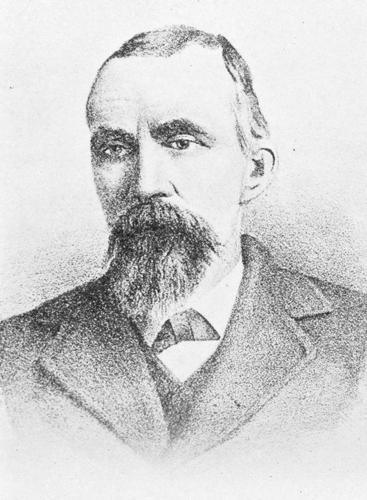A mining relic, now a monument to the spirit of silver reduction in the historic Walker Mining District near Prescott, is the Walker CharcoalKiln.
Erected by Jake and Joe Carmichael around 1880, its purpose was to aid in local smelting operations by supplying charcoal, a needed ingredient due to its ability to generate excessive heat essential to the improvement of silver ore.
Composed of loose granite blocks and standing 25 feet high, the kiln’s tightly constructed design was to exclude unwanted air. Gamble oak, a hardwood, was cut locally and vertically stacked inside the kiln from an entrance at the base and afterward from a hole in the top rear, accessible by a rise.
A fire was lit from the inside, and the entrance and rear opening were sealed, with a limited amount of air channeled through small openings to keep the wood smoldering .
Inside temperatures up to 500 degrees Celsius were necessary to carbonize the dry wood and convert it to charcoal. The resulting product could be as much as 40 bushels of charcoal per cord of wood.
The charcoal was taken to local smelters, including one at Howells, 4 miles east of Prescott and less than a mile from Walker.
The two-stack smelter was erected along Lynx Creek on what became known as Smelter Hill. The smelter produced $173,825 worth of lead and silver during its short duration in 1882. Scant remains exist today, other than several smelter foundations.
Mining in the area dates back to Capt. Joseph R. Walker, namesake of the famed Walker Expedition that discovered placer gold along Lynx Creek, a gold-bearing stream, in 1863 and the resulting town that boasted up to 3,000 people at its height.
Lynx Creek was christened after a miners’ unfortunate run-in with a lynx along the creek.
The country rock in the vicinity includes brown Precambrian schist overlain with light-gray Tertiary granite with abundant quartz outcroppings.
Numerous lode gold deposits of limited profitability abounded in the area worked by arrastres, or mills. Difficult topography made the transportation of ore challenging, while lack of water hindered processing: Eight tons of water to one ton of ore were needed for processing.
The Panic of 1893, a severe economic depression in the United States, led to the repeal of the Sherman Silver Act, which in turn negatively impacted silver mining in the West. Silver prices dropped from 83 cents per ounce to 62 cents per ounce within a several-day period, coupled with bank closures and a decline in the real estate market across the county.
The town of Walker also experienced a decline, though a post office at Walker operated between 1879 and 1940.
Total gold production of the mines and placers in the Walker Mining District was estimated around $1.5 million, over half of which was produced before 1900. In today’s market, that figure would be about $45 million.
Since 1976, the kiln has been on the National Register of Historic Places. It is accessible off a quarter-mile trail near the junction of Walker Road and Big Bug Mesa Road in the Prescott National Forest.
Summer homes and recreational activity abound in the area, which once served as a mining center that helped establish Prescott.
The 55-acre Lynx Lake was created after a dam was constructed in the mid-20th century in Lynx Creek by the Arizona Game and Fish Department.
The lake is popular for boating and fishing and is stocked with rainbow trout and large-mouth bass. It also serves as a destination for recreational gold-panning.






